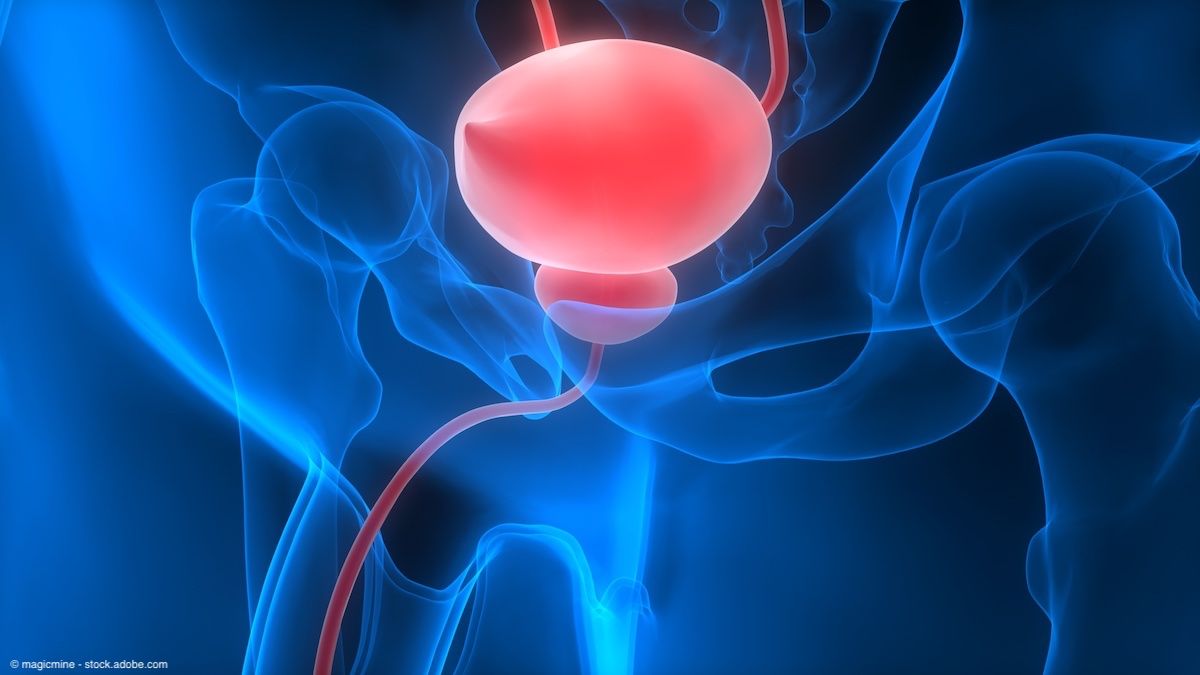Article
UGN-101 after complete endoscopic ablation appears safe and efficacious in UTUC
Author(s):
In the study, 69% of patients who underwent complete ablation had no visible disease at first endoscopic evaluation, compared with 40% of patients who underwent chemoablation therapy.
Patients who receive complete endoscopic ablation prior to treatment with UGN-101 (Jelmyto) for upper tract urothelial carcinoma (UTUC) may be less likely to present with disease at first endoscopy or experience adverse events, according to data from a retrospective sub-analysis of the mitomycin gel.1,2
Patients who had a multifocal tumor experienced a higher early recurrence rate compared with those patients with a unifocal tumor.

The findings were presented by lead author Craig V. Labbate, MD, at the 2023 American Urological Association Annual meeting in Chicago, Illinois.
“The prior registration trial, the OLYMPUS trial [NCT02793128], used UGN-101 in the chemoablative approach, so not having complete endoscopic ablation of tumors. Our objective was to report the early oncologic efficacy and safety profile of using this product after a complete endoscopic ablation of upper tract urothelial carcinoma,” said Labbate during the presentation. Labbate is a urologist at MD Anderson Cancer Center in Houston, Texas.
For the study, investigators retrospectively analyzed patients treated with UGN-101 across 15 high-volume centers. The study included an efficacy cohort of 115 patients, of which 52 received adjuvant UGN-101 after complete endoscopic ablation, and a safety cohort of 132 patients, of whom 57 received adjuvant UGN-101 after complete endoscopic ablation.
Data showed that 69% (36/52) of patients who underwent complete ablation had no visible disease at first endoscopic evaluation, compared with 40% of patients who underwent chemoablation therapy. Complete response rate at first endoscopic evaluation in the phase 3 OLYMPUS trial was 59%.
The ipsilateral disease-free survival was 63% at median 6.8-month follow-up. For those with high-grade disease, the rate of tumor presence was around 50%.
Patients who had a multifocal tumor experienced a higher early recurrence rate compared with those patients with a unifocal tumor.
In regard to safety, a total of 10 (19%) patients experienced ureteral stenosis after UGN-101 compared with 17 (29%) patients who underwent chemoablative therapy (P = .28).
“Those who had the chemoablative approach or the adjuvant approach had lower ureteral stenosis rates than that described in the OLYMPUS trial. However, [they] were not statistically significant between the 2 cohorts,” explained Labbate during the presentation.
“We are pleased to see that the growing body of real-world evidence supports the use of Jelmyto in a diverse [low-grade] UTUC population. Jelmyto is a versatile therapy for clinicians trying to manage high recurrence rates of [low-grade] UTUC,” stated Mark Schoenberg, the Chief Medical Officer of UroGen, in a news release on the findings.22
The authors note that longer follow-up is needed to assess the durability of results.
References
1. Labbate C, Woldu S, Murray K, et al. Efficacy and safety of mitomycin gel (UGN-101) as an adjuvant therapy after complete endoscopic management of upper tract urothelial carcinoma. Presented at: American Urological Association Annual Meeting, April 28-May 1, Chicago. Abstract MP46-08
2. First study to evaluate JELMYTO use post-complete endoscopic ablation reports 69% of patients were disease free at the first endoscopic evaluation. News release. UroGen. May 1, 2023. Accessed May 16, 2023. https://www.businesswire.com/news/home/20230501005228/en.

















